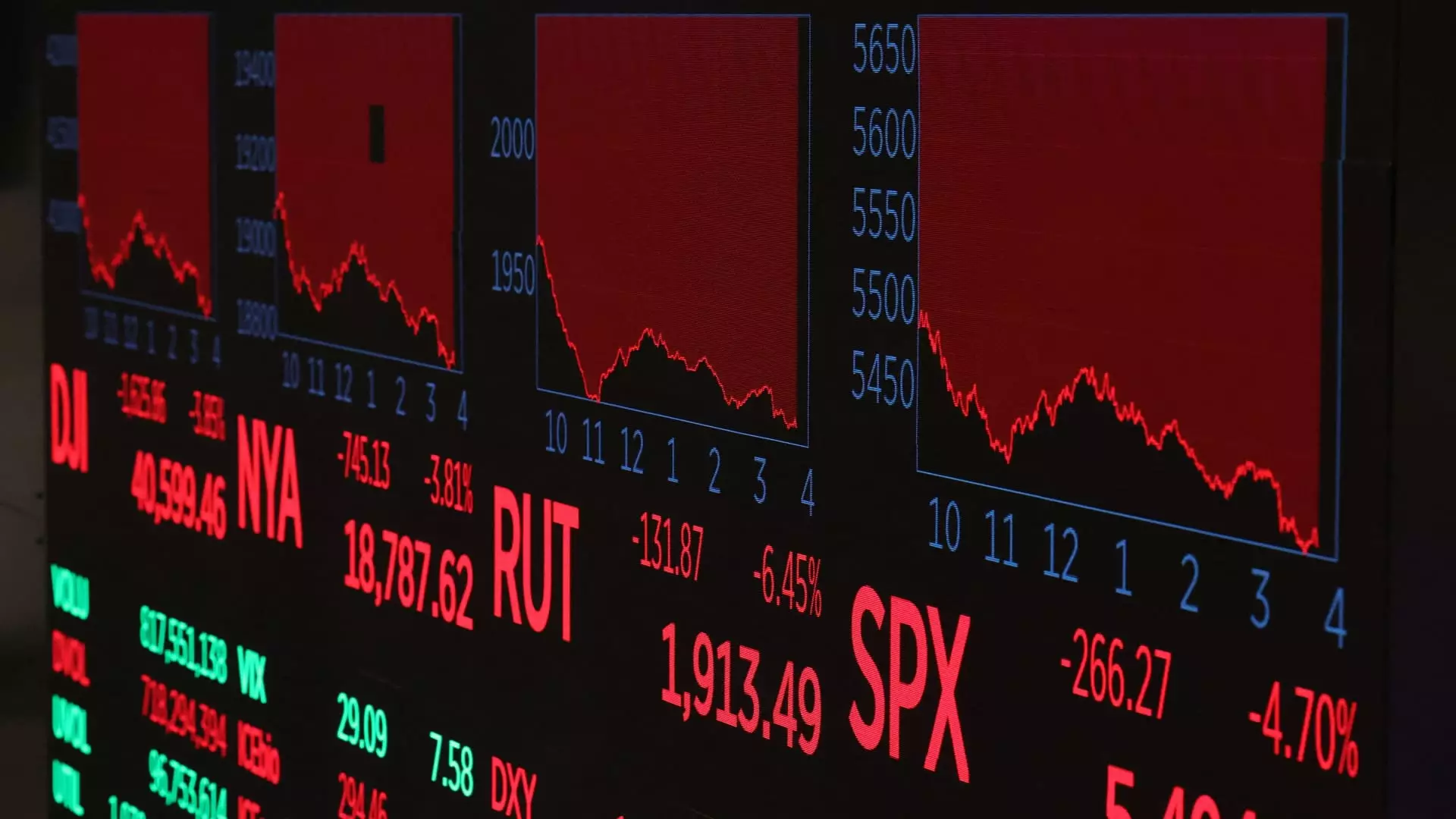As Wall Street anxiously monitored the rollercoaster that is market economics, particularly in light of President Trump’s volatile tariff policies, an intriguing phenomenon emerged: the steadfast determination of everyday investors. Amid fears of rising inflation and recession, these retail investors like Rachel Hazit from Philadelphia demonstrated an uncanny ability to find opportunities within chaos. Hazit, a 32-year-old marketer, seized the moment, investing in prominent ETFs as the market tumbled. Her approach exemplifies a unique mindset; instead of succumbing to panic, she viewed the market drop as a “sale” — a perspective that many seasoned investors often overlook in tumultuous times.
The crux of these everyday investors’ success lies not just in their financial choices, but in their psychological resilience. This group understands that downturns present opportunities, casting aside the traditionally bleak outlook associated with a faltering economy that can paralyze larger institutional players. The sentiment echoed through many retail investors is succinctly captured by the phrase “buying the dip,” marking a tactical approach that signifies hope and opportunity rather than despair.
Market Dynamics: A Tale of Two Investors
The contrasting actions of institutional and retail investors bring to light an intriguing narrative in market behavior. While large investment firms reacted to Trump’s tariff announcement by bracing for a lengthy downturn, withdrawing funds in record amounts, individual investors had the opposite response. Data from Vanda Research shows a wave of investments totaling over $8.8 billion from retail traders during a period when the market was in freefall. This stark disconnect highlights a broader trend: while big players may suffer from analysis paralysis, individuals armed with conviction are willing to dive headfirst into the fray, ignoring the cacophony of alarm bells echoing through the financial landscape.
This disparity raises an urgent question: Are everyday investors more in tune with the market than institutional strategists? Or are they merely playing a dangerous game of wits, betting on their interpretation of economic fundamentals? While the latter may hold some truth, the rising influx of capital into conservative ETF options by retail investors demonstrates an inherent belief in the resilience of the market. The appeal of diversified holdings suggests a preference for stability amid uncertainty, strategically countering the panic behaviors seen in their institutional counterparts.
Fearing for the Future: Tariff Policies and Purchasing Power
Despite their investment zeal, the overall economic landscape remains concerning for many everyday investors. Hazit, for example, while strategically placing her cash into the market, harbors genuine worries about her purchasing power due to the potential fallout from tariff policies. The very strategies that underpin her investment choices — buying steadfastly during downturns — are intertwined with apprehensions about the larger economic ramifications of such policy decisions. The irony is palpable: as retail investors rally against the market tide, they must simultaneously confront the potential existential threat to their consumer rights.
Interestingly, this duality reflects a broader, more poignant narrative of today’s economy. On the one hand, these retail investors exude confidence, willing to engage with the market when traditional fears loom large. On the other hand, doubts linger regarding how macroeconomic trends, such as inflation driven by rising tariffs, will ultimately alter their day-to-day lives. Whether they are “making millionaires” or merely making miscalculations, that question remains unresolved.
The Fear Gauge: Volatility and Its Discontents
Volatility is often regarded as the enemy of investment, but for active retail participants, it can also serve as a catalyst for opportunity. The CBOE Volatility Index (VIX) recently soared, indicating rampant fear among institutional investors, yet retail players have remained resolute. This divergence in sentiment challenges the narrative that markets operate under a singular logic — instead, it reveals how divided perceptions can coexist dramatically in the ever-churning world of finance.
As emotions fluctuate with each stock chart, the savvy retail investor learns to sift through the noise, choosing instead to adopt a longer-term perspective. A testament to this mindset is how individuals like Namaan Mian adopt strategies aligned with holding diversified index funds. This inclination toward market indices solidifies their standing as constructive participants rather than mere speculators. Though threats loom from policy shifts and unpredictable market forces, these investors thrive in uncertainty, reinforcing the belief that, when wielded wisely, downturns can cement one’s financial foundation.
The Influence of Social Media and Digital Communities
In this age of information, the rise of social media platforms and online investment communities cannot be ignored as formidable forces shaping retail investor behavior. Influencers and investment educators are leveraging their platforms to encourage buying during dips rather than panic-selling. Tori Dunlap encapsulates this sentiment perfectly, urging followers to seize market downturns as opportunities for wealth-building.
The pervasive nature of these digital communities indicates a revolutionary shift in how investing knowledge is disseminated. Traditional barriers to financial literacy are crumbling, creating an ecosystem where retail investors, empowered by knowledge and mutual support, challenge the established norms of stock market engagement. As more individuals adopt this collective wisdom, the boundaries that once fragmented financial engagement begin to disappear, suggesting a brighter, more inclusive future for investment.
This transformation reflects a growing consciousness around finance that not only seeks individual upliftment but collective betterment, challenging the notion that markets should belong solely to the elite. The emergence of financially literate, socially conscious retail investors heralds a significant evolution in the landscape of American investing.

